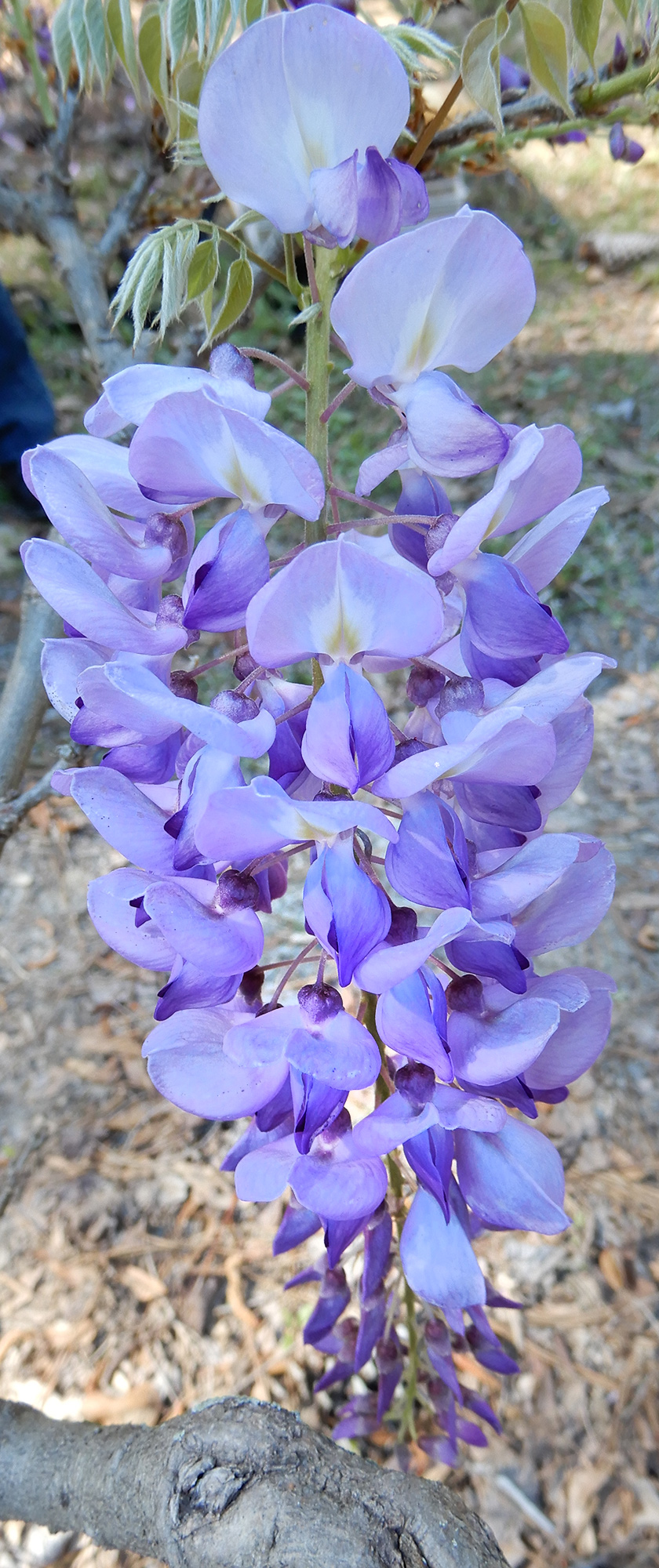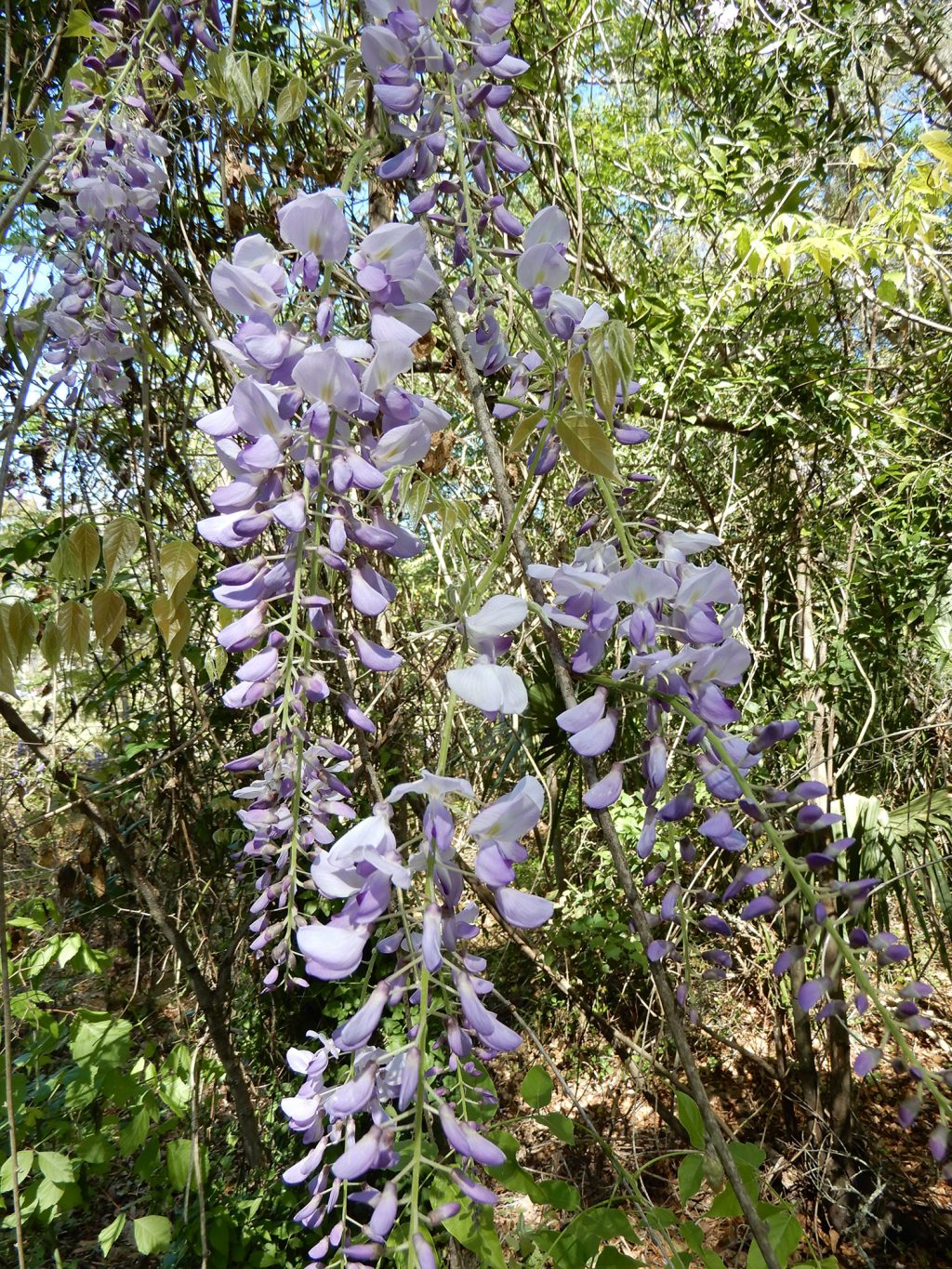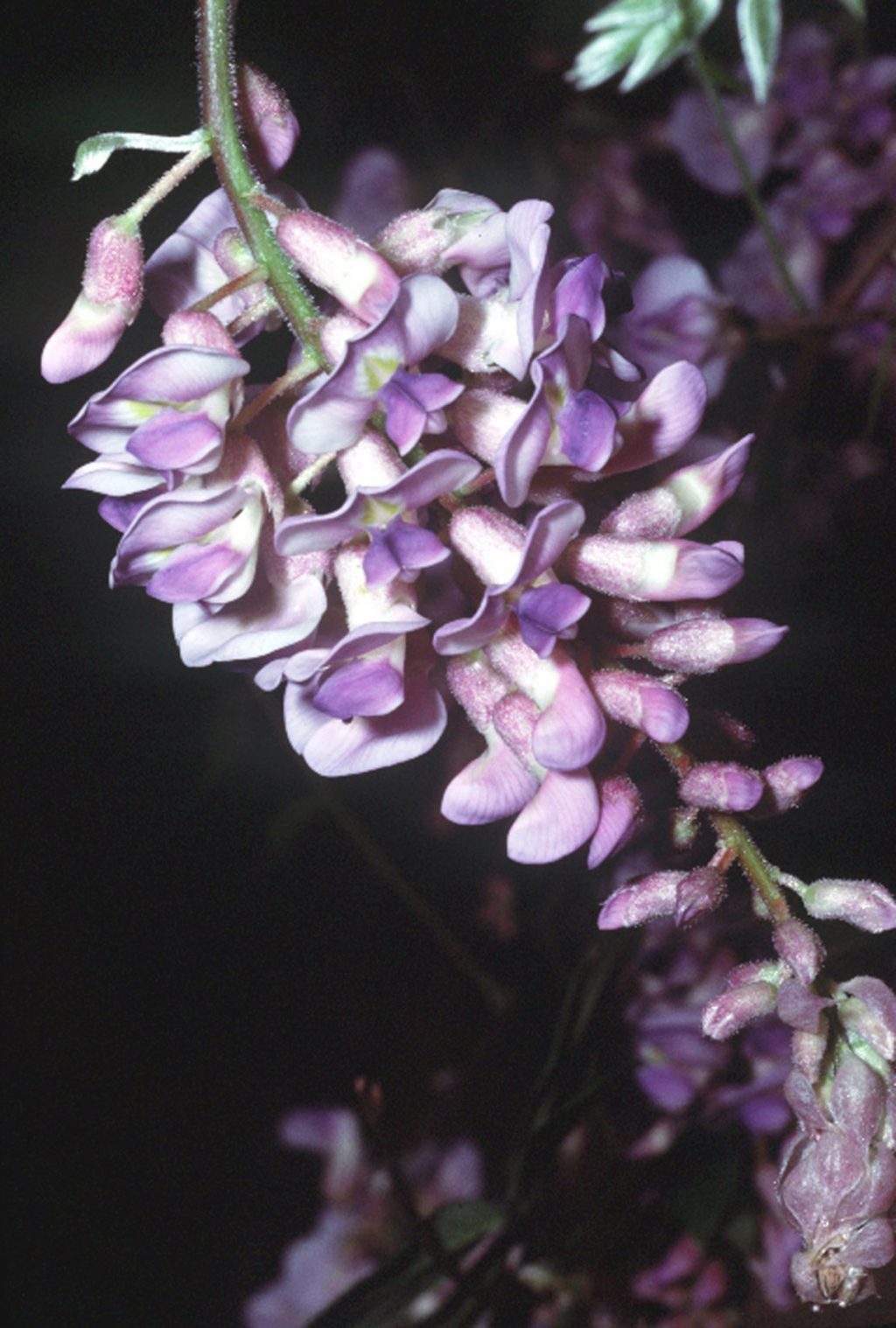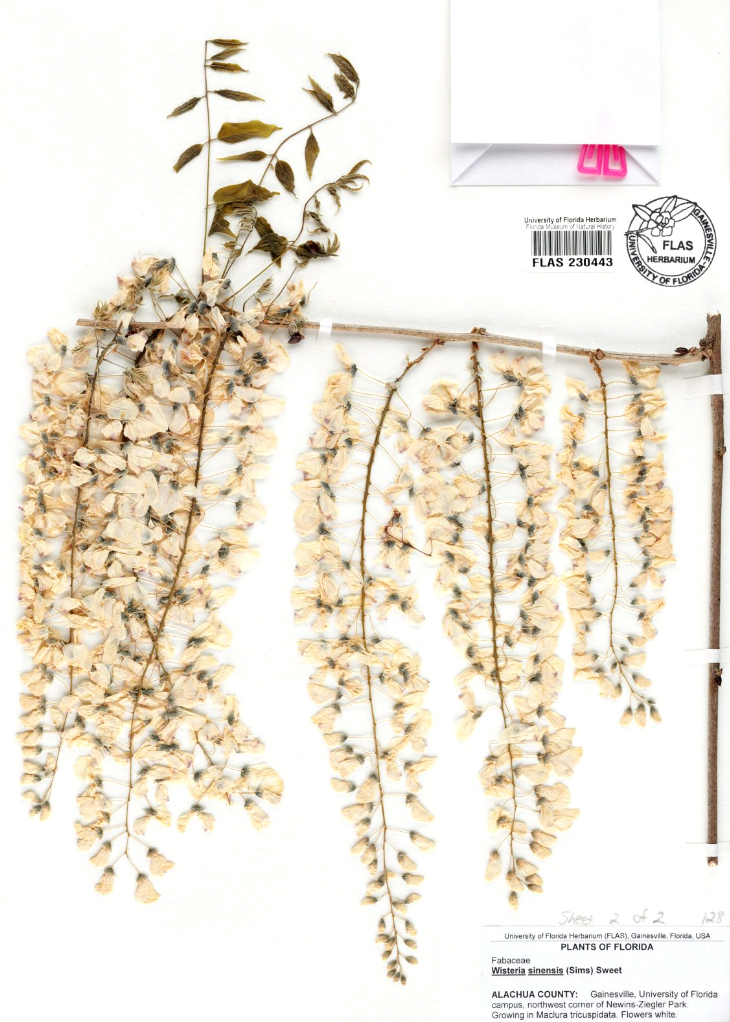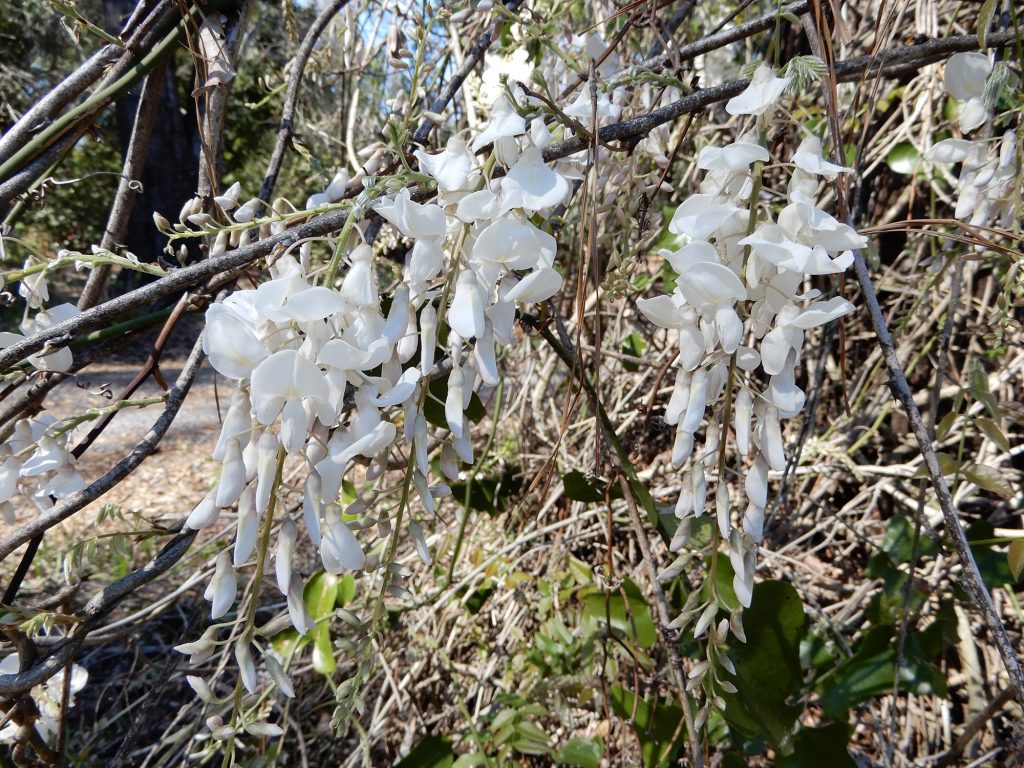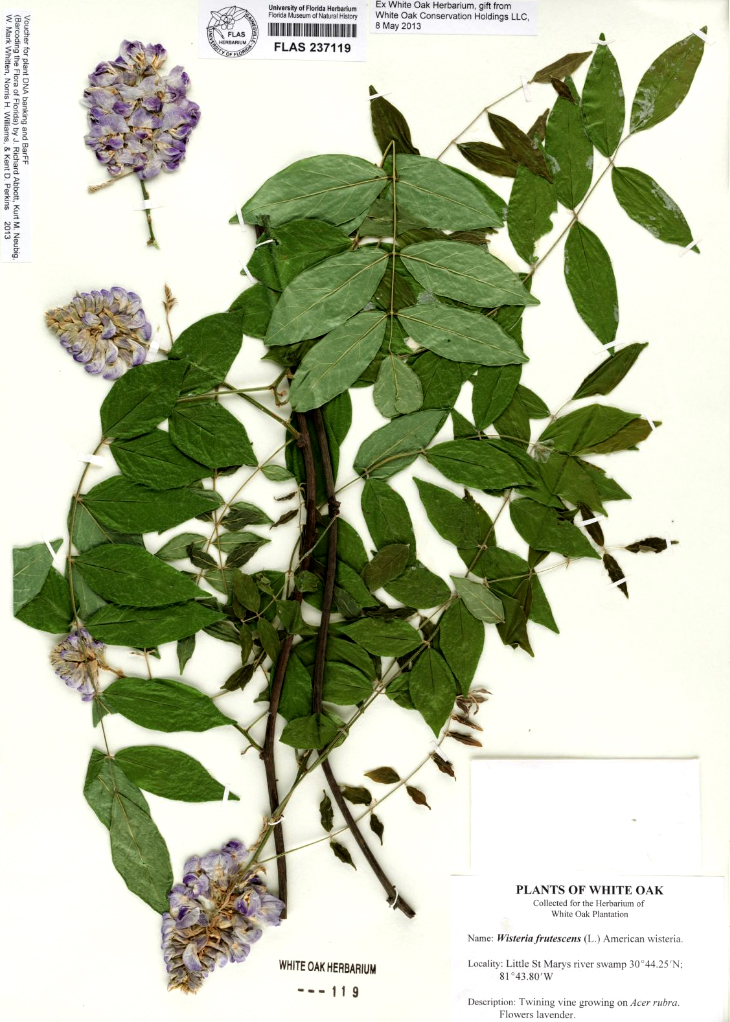Wisteria has become somewhat iconic in lush gardens in the Southeastern United States. In the spring, it’s easy to locate as the flowers bloom in fragrant clusters of light purple to white along roadsides and up the sides of houses. But wisteria isn’t always what it seems.
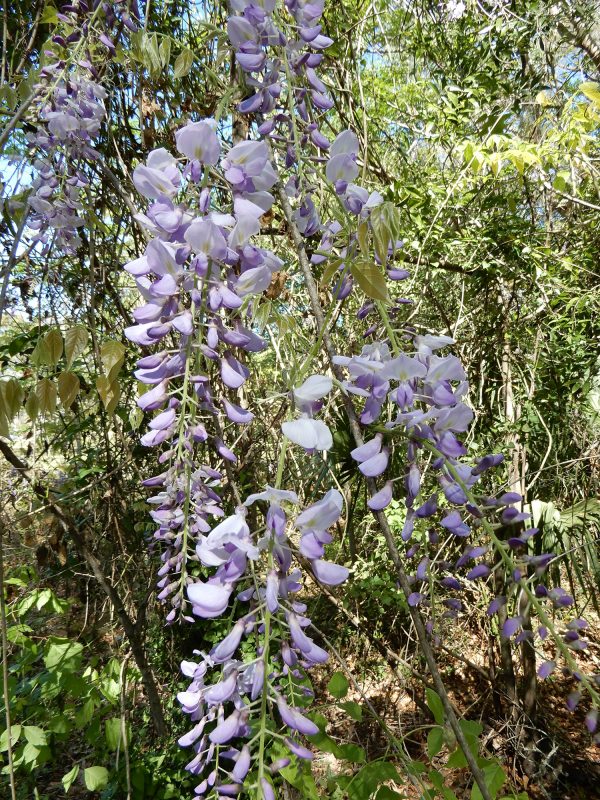
UF herbarium photo by Marc S. Frank
1: Wisteria is in the pea/bean family.
Wisteria is a genus of about five to seven species of deciduous, woody vines in the Fabaceae (pea/bean) family. Fabaceae is the third-largest flowering plant family, with around 19,500 known species.
2: Many wisteria plants you see are invasive in Florida.
Two of the Asian species—Chinese wisteria (Wisteria sinensis) and Japanese wisteria (Wisteria floribunda)—were introduced to American horticulture in the early 19th century, and have subsequently escaped into natural areas and are regarded as invasive. Chinese wisteria is the most commonly cultivated species in Florida and elsewhere in the Southeastern U.S., but Japanese wisteria is also grown.
Many of the invasive plants appear to be a hybrid of Chinese wisteria and Japanese wisteria known as Wisteria × formosa.
The UF/IFAS Assessment of Non-native Plants in Florida’s Natural Areas indicates that Chinese wisteria and Japanese wisteria are both invasive and not recommended in any region of Florida.
3: There is a native species of wisteria.
American wisteria (Wisteria frutescens) is suggested as a Florida-friendly alternative. American wisteria can be distinguished by its shorter (5-10 cm long), denser flower clusters, individual flowers borne on stalks less than 1 cm long and pods that are hairless.
In contrast, Chinese and Japanese wisteria typically have longer flower clusters (up to 50 cm long), individual flowers borne on stalks 1.5 to 2 cm long and pods that are densely hairy. In northern Florida, Chinese wisteria typically blooms in March to early April (before the leaves are fully expanded), while Japanese and American wisteria bloom from April to June.
4: American wisteria is a host plant to native butterflies and moths.
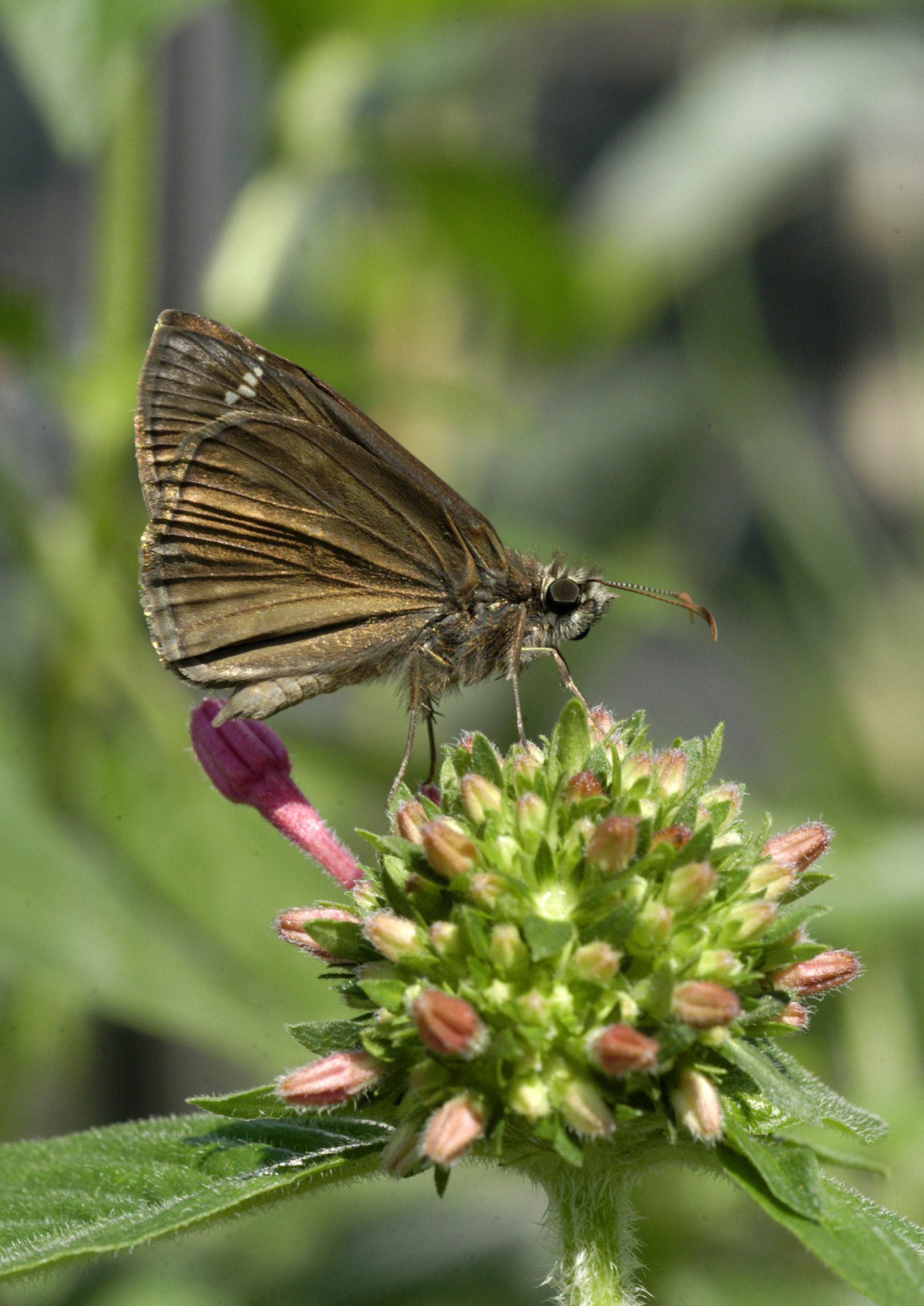
Florida Museum photo by Jeff Gage
Another reason to choose American wisteria is that native plants support local biodiversity. Several species of butterflies and moths use Wisteria frutescens as a larval host:
- Long-tailed skipper (Urbanus proteus)
- Silver-spotted skipper (Epargyreus clarus)
- Marine blue (Leptotes marina)
- Zarucco duskywing (Erynnis zarucco)
- Cuphodes wisteriae moth
- Io moth (Automeris io)
- Evergreen bagworm (Thyridopteryx ephemeraeformis)
- Dogwoon borer moth (Synanthedon scitula)
- Limacodid moth (Acharia stimulea)
- Locust twig borer moth (Ecdytolopha insiticiana)
- Horace’s duskywing (Erynnis horatius)
- Cecropia moth (Hyalophora cecropia)
- Blinded sphinx moth (Paonias excaecatus)
- White-marked tussock moth (Orgya leucostigma)
- Fall webworm (Hyphantria cunea)
5: Wisteria is a toxic plant.
While wisteria flowers are said to be edible in moderation, the rest of the plant is regarded as toxic to both humans and pets, containing several different toxins that can cause severe gastrointestinal distress. The toxins are most concentrated in the pods and seeds.
Note: This should be taken as a reminder to *never* eat any plant unless you are 100% sure of its identity and certain that it is safe to consume.
- Browse more wisteria specimens.
- Learn more about the herbarium at the Florida Museum.
- Research non-native plants in Florida with the UF/IFAS Assessment site.
Marc Frank is an Extension botanist and a biological scientist in the University of Florida Herbarium.
